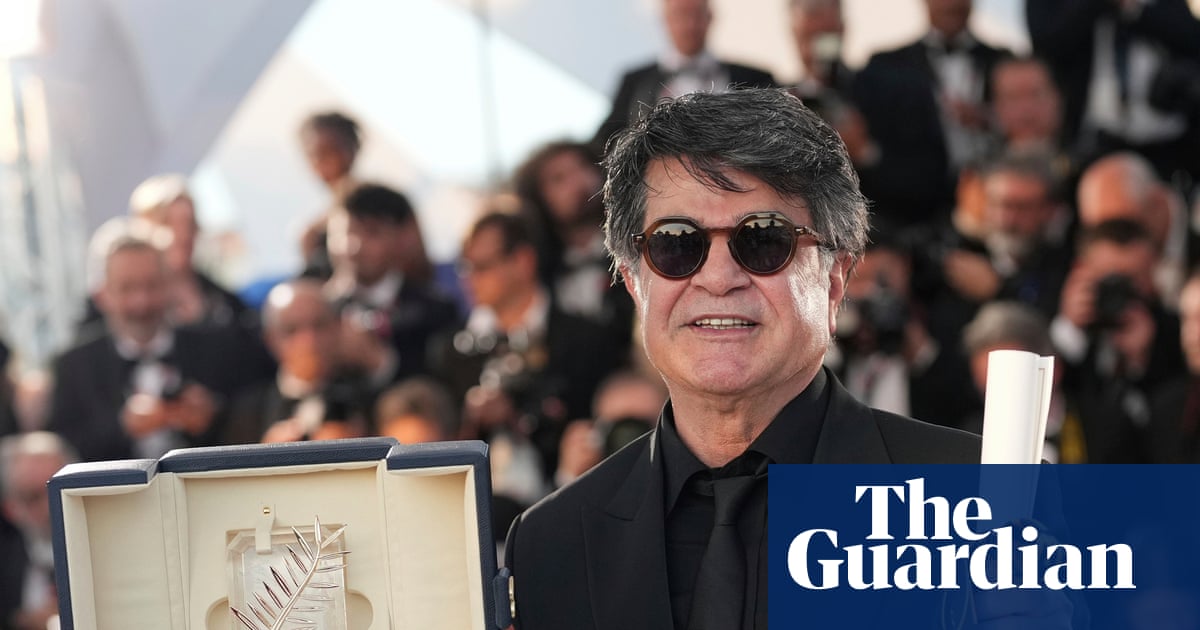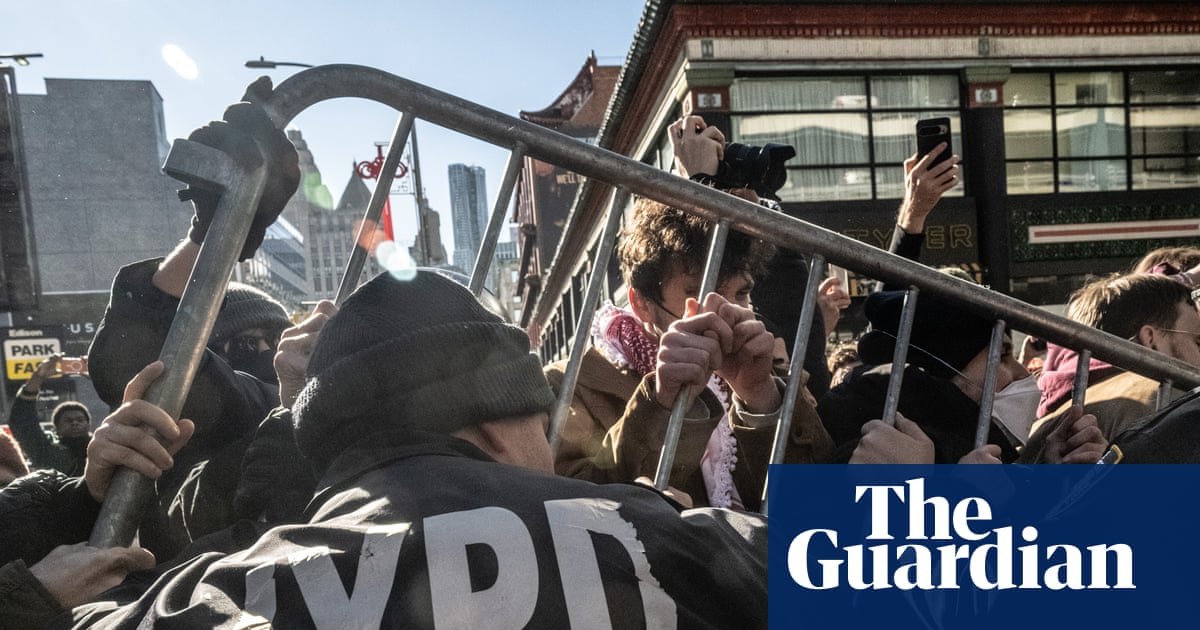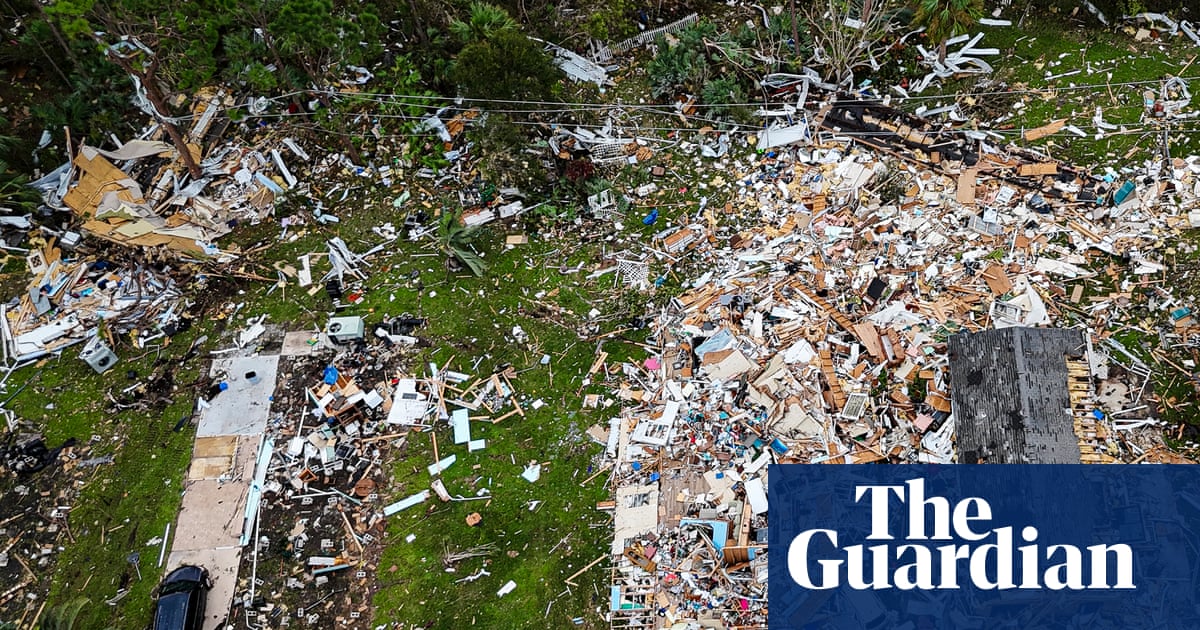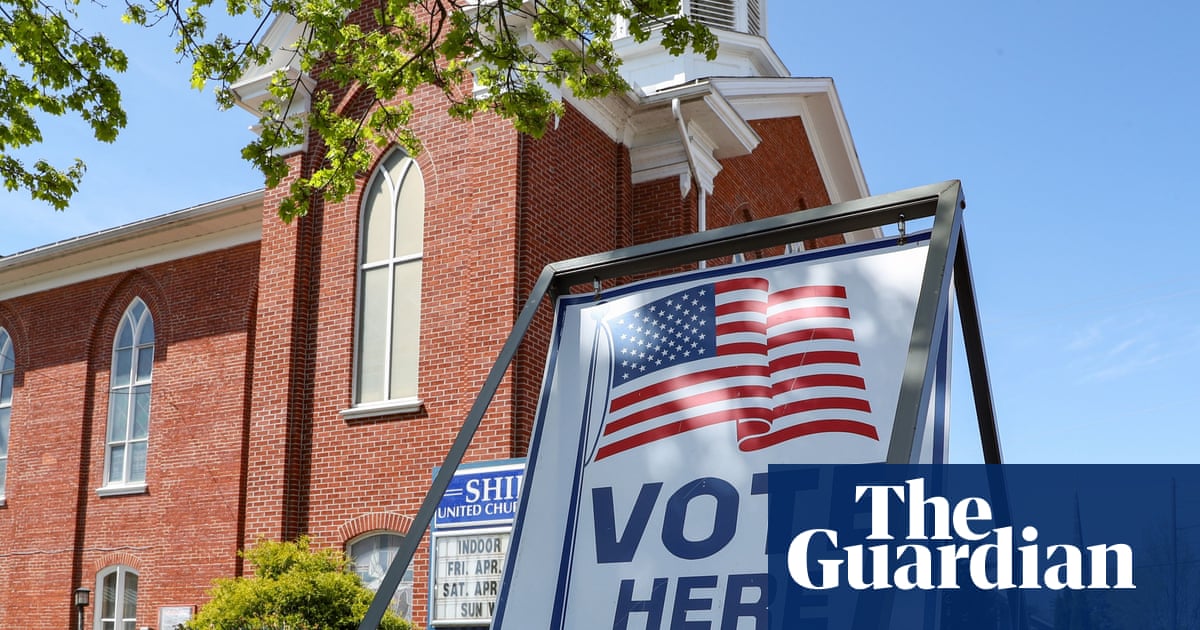The press corps crowded into the East Room – crystal chandeliers, moulded ceilings, portraits of past presidents – on Monday for an event celebrating student baseball champions from Louisiana. But first Donald Trump had something else on his mind.
“Right behind us we are building a ballroom,” he said, gesturing towards a gold curtain. “I didn’t know I’d be standing here right now ’cos right on the other side you have a lot of construction going on, which you might hear periodically.”
Beyond the Oz-like curtain demolition crews were tearing down part of the White House’s East Wing so they could start building Trump’s ballroom, a $250m project he says will be paid for by himself and unnamed donors. The spectacle of a mechanical excavator ripping through the facade, leaving a tangle of broken masonry, rubble and steel wires, was hard for some to take.
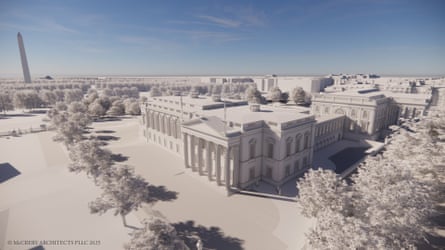
Douglas Brinkley, a presidential historian, was quoted by WTOP News as saying: “Maybe it’s just the dislike of change on my part, but it seemed painful, almost like slashing a Rembrandt painting. Or defacing a Michelangelo sculpture.”
The US president has never been one to shy away from glaringly obvious metaphors. For the past decade, as one norm and institution after another has collapsed, critics have called him a human wrecking ball. So what better than literally wrecking a wing of the 225-year-old White House?
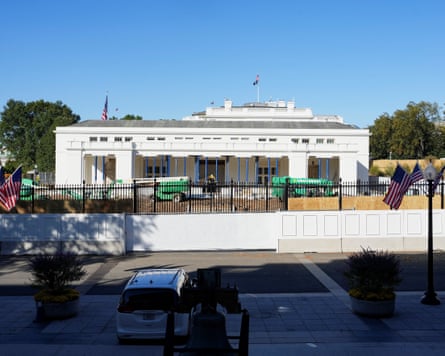
David Frum, a former speechwriter for President George W Bush, tweeted: “Something profoundly symbolic about Trump taking a wrecking ball to the White House … paying for the demolition with money from cronies and insiders seeking government favors … and the Republicans in Congress acquiescing as Trump treats public assets as private property.”
Apparently stung by the criticism and feeling defensive, the White House blasted out a press release on Tuesday. It complained: “In the latest instance of manufactured outrage, unhinged leftists and their Fake News allies are clutching their pearls over President Donald J Trump’s visionary addition of a grand, privately funded ballroom to the White House – a bold, necessary addition that echoes the storied history of improvements and renovations from commanders-in-chief to keep the executive residence as a beacon of American excellence.”
The release listed past examples that included Teddy Roosevelt building the West Wing, Harry Truman overseeing a “total reconstruction” of the White House’s interior, Richard Nixon converting the swimming pool into the press briefing room and Barack Obama resurfacing the south grounds tennis court into a basketball court, complete with construction photos.
The administration does have a point: the White House has constantly evolved and, before First Lady Jackie Kennedy intervened, it was a dingy, unglamorous place. Its appeal is that it is grand but not too grand: bigger and plusher than Britain’s 10 Downing Street, to be sure, yet modest compared with some of the baroque palaces of despots around the world.
after newsletter promotion
But there are a few things going on here. First, Trump seems bored by domestic policy. He would rather not talk about an economy that is stalling. The government shutdown, which would have consumed any of his predecessors, seems to induce only a yawn and AI videos depicting Democrats in sombreros.
He is following in the tradition of past presidents who in their second terms pivoted to foreign policy, where it can seem easier to build a legacy (and maybe even win a Nobel peace prize). Last week his in-tray included Gaza, Argentina, Venezuela, Russia and Ukraine; on Monday he met the prime minister of Australia; on Friday he heads to Asia.
Trump’s ennui has also turned him into an unlikely Benjamin Button: he is regressing from commander-in-chief to his youthful career as a builder and property wheeler-dealer. Like everything else about his second term, his makeover of the White House is far more ambitious than first time around.
He planted two giant flagpoles that fly the Stars and Stripes, drowned the Oval Office in gold decor (the New York Times called it a “gilded rococo nightmare”) and installed a “presidential walk of fame” with gold-framed portraits of every president except Joe Biden, who is supplanted by an autopen.

It’s all beginning to feel like Mar-a-Lago, Trump’s estate in Palm Beach, Florida, an opulent orgy of gold-plated fixtures and gold leafing. I heard Elvis Presley’s Are You Lonesome Tonight? floating over the West Wing on Monday and imagined Trump playing DJ on his new Rose Garden patio.
At a Rose Garden lunch on Tuesday, the president told Republican senators: “You probably hear the beautiful sound of construction to the back here. You hear that sound? That’s music to my ears. I love that sound. When I hear that sound, it reminds me of money. In this case, it reminds me of lack of money because I’m paying for it.”
Trump has plans for Washington too. Last week he unveiled plans for a triumphal arch across from the Lincoln Memorial that was quickly dubbed the “Arc de Trump” topped by a state of Lady Liberty – in gold, naturally. He showed off three 3D models – small, medium and large – and quipped: “I happen to like the large one. Why are you shocked?”
Social media lit up with comparisons to Adolf Hitler’s chief architect Albert Speer and his project for “Germania”, a monumental new capital city intended to dwarf London, Paris and Washington. It would have had a dome nearly 16 times bigger than St Peter’s Basilica in Rome and a triumphal arch three times bigger than Paris’s Arc de Triomphe.
But there is another analogy that might be just as apt. “‘… My name is Ozymandias, King of Kings; / Look on my Works, ye Mighty, and despair!’” wrote the British poet Percy Bysshe Shelley. “Nothing beside remains. Round the decay / Of that colossal Wreck, boundless and bare / The lone and level sands stretch far away.”

 1 month ago
30
1 month ago
30


